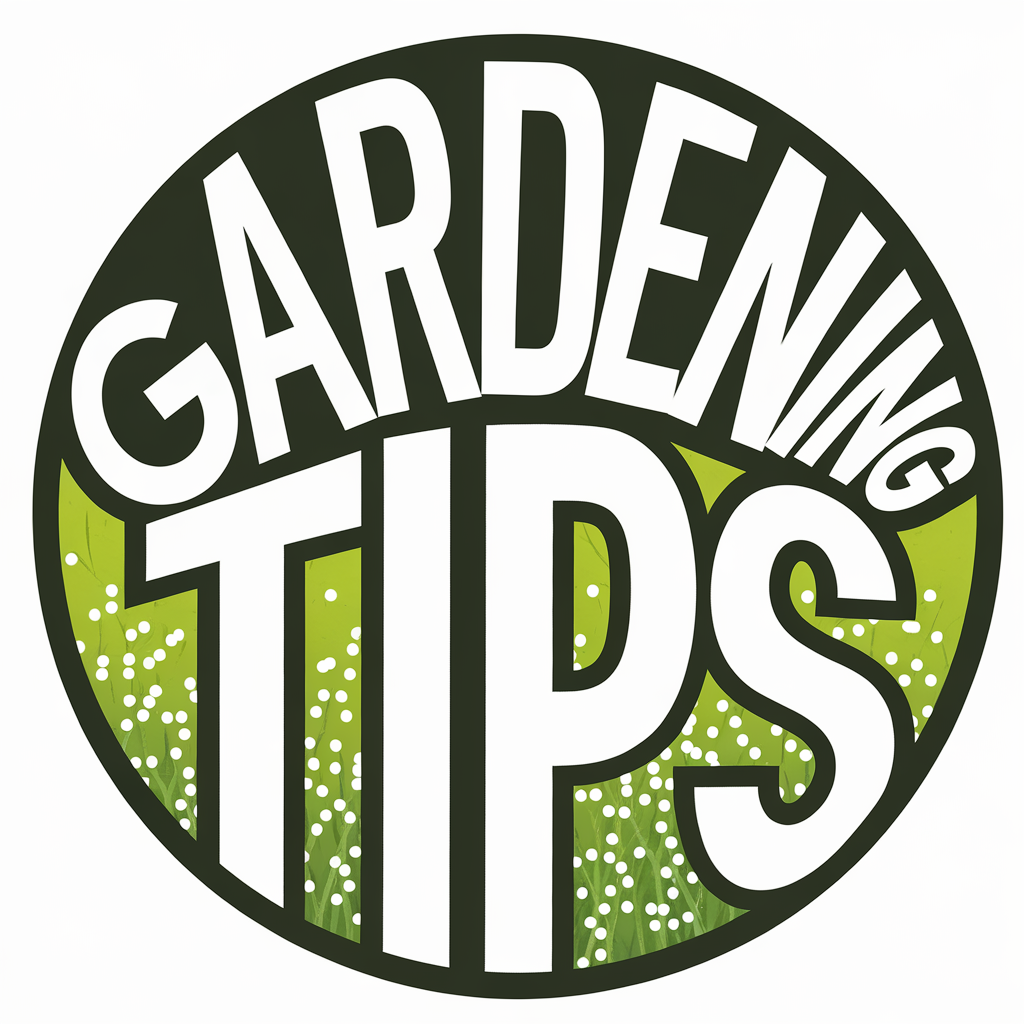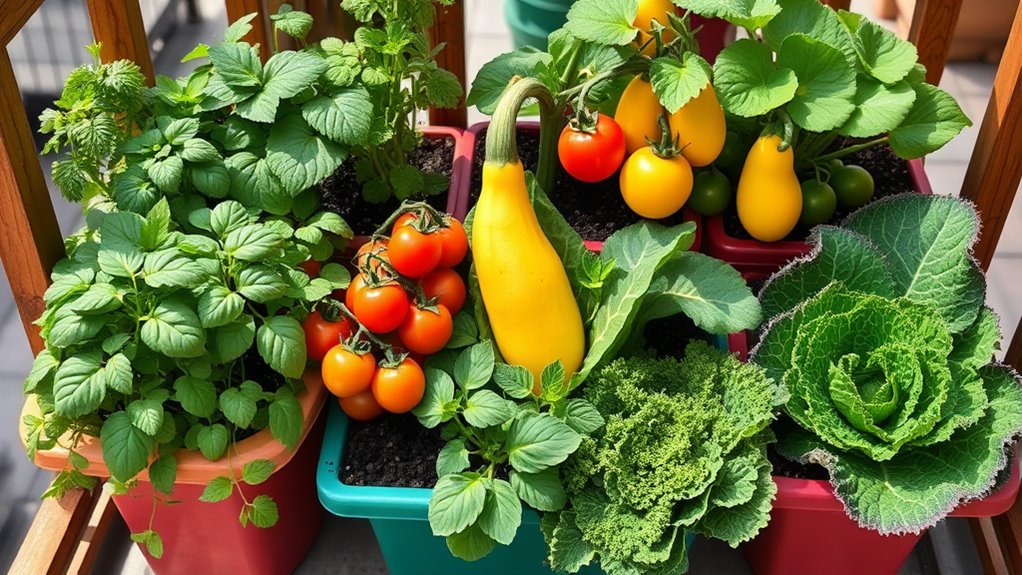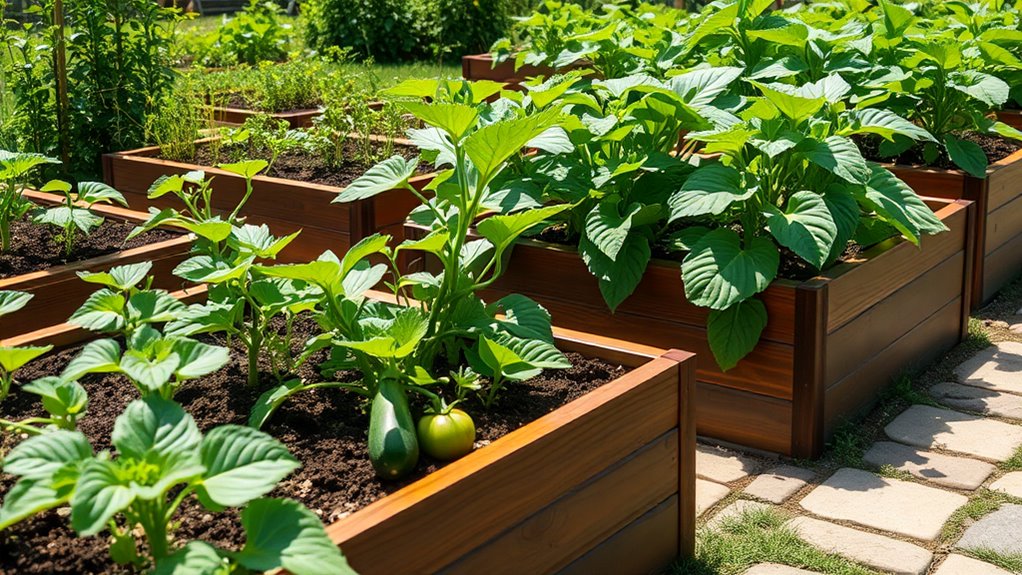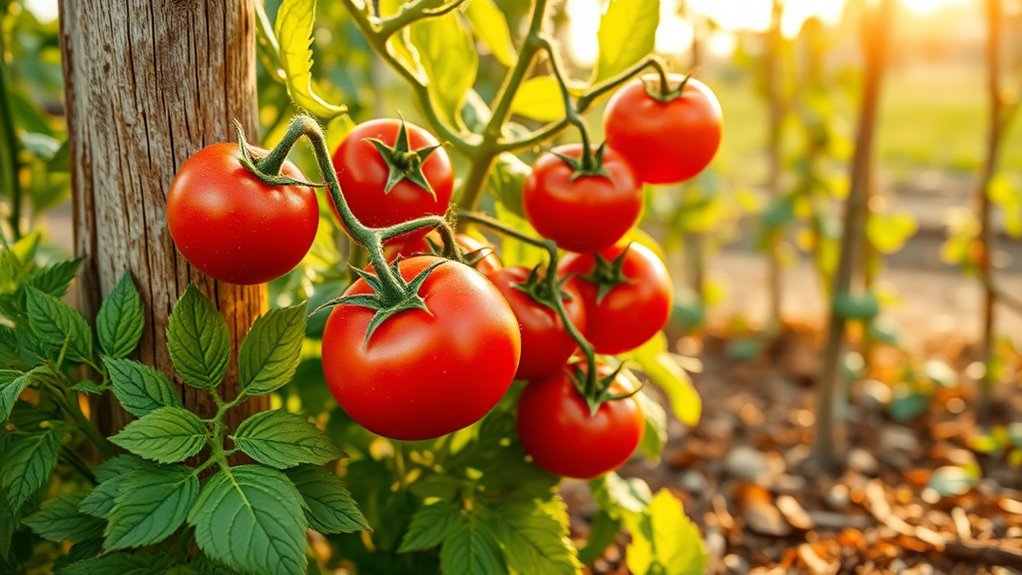Why Your Tomatoes Aren’t Growing – And How to Fix It Fast!
If your tomatoes aren’t growing, it could be due to poor soil quality, inadequate sunlight, or pest infestations. Test your soil for pH and nutrients, and improve drainage if needed. Make sure your plants get at least six hours of direct sunlight daily. Check for pests like aphids or spider mites and treat them promptly. Proper watering and nutrient management are key for healthy growth. Learn more about other common barriers your tomatoes may face to boost your harvest.
Poor Soil Quality
If your tomatoes aren’t thriving, poor soil quality might be the culprit.
In vegetable gardening, soil health is essential for plant growth.
First, assess your soil’s texture and drainage; compacted or sandy soils can hinder nutrient absorption.
Test the pH—tomatoes prefer a range of 6.0 to 6.8. If it’s off, amend with lime or sulfur as needed.
Incorporate organic matter, like compost, to improve fertility and moisture retention.
Additionally, check for essential nutrients like nitrogen, phosphorus, and potassium. Conducting soil testing can provide valuable insights into specific deficiencies and pH imbalances.
Inadequate Sunlight
If your tomatoes aren’t thriving, inadequate sunlight might be the culprit.
These plants need at least six to eight hours of direct sunlight daily to produce fruit effectively.
Check for any shade-inducing obstacles like trees or buildings that could be blocking that essential light. Additionally, consider using container gardening techniques to maximize sun exposure on your balcony.
Optimal Sun Exposure
How vital is sunlight for your tomato plants? It’s essential! Tomatoes thrive with at least six to eight hours of direct sunlight daily. Without adequate exposure, plants become leggy, produce fewer fruits, or may not fruit at all. To make sure your tomatoes are getting the right amount of sun, consider the following:
| Sunlight Hours | Plant Growth | Fruit Production |
|---|---|---|
| 0-3 hours | Weak and spindly | Minimal to none |
| 4-5 hours | Stunted growth | Few fruits |
| 6-8 hours | Healthy growth | Ideal fruits |
Adjust your planting location to maximize sunlight!
Shade-Inducing Obstacles
Shade-inducing obstacles can greatly hinder your tomato plants’ growth and fruit production.
Trees, buildings, or fences that block sunlight can reduce your plants’ exposure to the essential 6-8 hours of direct sunlight daily.
To combat this, assess your garden’s layout; consider relocating your plants to a sunnier spot or trimming back overhanging branches.
If moving isn’t an option, you might install reflective materials, like mylar, to bounce light onto your plants.
Regularly monitor their growth, as increased sunlight can lead to healthier foliage and better fruit yield.
Addressing these obstacles is key to thriving tomato plants.
Incorrect Watering Practices
Incorrect watering practices can severely impact your tomatoes’ growth, whether you’re overwatering or underwatering. You need to understand how each issue affects your plants and establish a consistent watering schedule. Let’s explore how to strike the right balance for ideal tomato health. Additionally, overwatering mistakes can lead to root rot and other health issues that hinder growth.
Overwatering Issues
What’s the right balance when it comes to watering your tomato plants? Overwatering can lead to root rot, stunted growth, and poor fruit quality. It’s essential to understand the signs of overwatering to prevent these issues.
| Signs of Overwatering | Effects on Plants | Solutions |
|---|---|---|
| Yellowing leaves | Root rot | Allow soil to dry out |
| Wilting despite moisture | Stunted growth | Improve drainage |
| Foul odor from roots | Poor fruit quality | Adjust watering habits |
Monitor your watering schedule, and make adjustments based on weather conditions and soil moisture. Your tomatoes will thrive!
Underwatering Consequences
While overwatering can stunt your tomato plants’ growth, underwatering presents its own set of challenges that can hinder your garden’s success.
Insufficient water leads to wilting leaves, stunted growth, and poor fruit development.
When your plants don’t receive enough moisture, they struggle to absorb nutrients, resulting in yellowing leaves and blossom drop.
Additionally, the lack of hydration can make your tomatoes more susceptible to diseases.
If you notice dry soil or crispy leaves, it’s a clear sign that your plants need attention.
Addressing underwatering promptly is essential to ensuring a thriving tomato harvest and maintaining overall plant health.
Watering Schedule Tips
Establishing a consistent watering schedule is essential for the health of your tomato plants, yet many gardeners fall into common pitfalls that can lead to improper hydration.
Overwatering can drown roots, while inconsistent watering creates stress, leading to blossom drop or cracking fruit.
To avoid these issues, water deeply but infrequently, aiming for about an inch of water per week.
Early mornings are the best time to hydrate, minimizing evaporation.
Monitor soil moisture; it should feel slightly dry an inch below the surface before you water again.
Nutrient Deficiencies
Have you ever wondered why your tomato plants aren’t thriving despite your best efforts? One common issue could be nutrient deficiencies. To make sure your tomatoes grow strong, pay attention to these essential nutrients:
- Nitrogen: Essential for leafy growth, lack of it can lead to yellowing leaves.
- Phosphorus: Essential for root development and fruiting, insufficient phosphorus can stunt growth.
- Potassium: Important for overall plant health, a deficiency may cause poor fruit quality.
Test your soil to identify deficiencies and amend with the right fertilizers. Conducting a proper soil test can help you understand why soil testing matters and ensure your tomatoes will thank you with lush foliage and bountiful fruits!
Pest Infestations
Could your tomato plants be struggling due to pest infestations? Common pests like aphids, spider mites, and whiteflies can sap your plants’ strength. Identifying these nuisances is vital for recovery. Implementing effective strategies for managing garden pests can significantly improve your plants’ health.
| Pest | Symptoms | Control Methods |
|---|---|---|
| Aphids | Curling leaves, sticky residue | Insecticidal soap, neem oil |
| Spider Mites | Webbing, yellowing leaves | Regular water spray, predatory mites |
| Whiteflies | Yellow leaves, stunted growth | Sticky traps, insecticidal soap |
Monitor your plants regularly, and act quickly to eliminate any pests. A proactive approach guarantees healthy, thriving tomatoes.
Disease Issues
What signs should you look for to determine if your tomato plants are suffering from diseases?
First, check for wilting or yellowing leaves, which can indicate stress from pathogens.
Next, observe any unusual spots or discoloration on the leaves and stems; these can signify fungal or bacterial infections.
Finally, watch for stunted growth or poor fruit development, as these often result from internal diseases.
- Wilting or yellowing leaves
- Unusual spots or discoloration
- Stunted growth or poor fruit development
Identifying these signs early is essential for taking corrective action and saving your plants. Additionally, consider planting basil nearby, as this companion plant can enhance pest resistance in your garden, potentially reducing disease pressure on your tomatoes.
Temperature Extremes
How do temperature extremes affect your tomato plants?
When temperatures soar above 90°F (32°C) or drop below 50°F (10°C), your tomatoes struggle to thrive.
High heat can cause blossom drop, preventing fruit set, while cold snaps can stunt growth and lead to poor fruit development.
These extremes stress your plants, making them vulnerable to diseases and pests.
To mitigate these effects, monitor your local weather, use mulch to regulate soil temperature, and consider row covers during cold spells. Additionally, organic gardening techniques can help your garden thrive under stress by promoting resilience in your plants.
Planting Mistakes
Temperature extremes can set the stage for other issues, particularly planting mistakes that hinder your tomato plants’ growth.
If you want to guarantee thriving plants, pay attention to these common pitfalls:
- Planting too early or too late: Timing is vital; wait until the soil warms up to at least 60°F.
- Overcrowding: Give each plant enough space to grow; ideally, they should be 18-24 inches apart.
- Inadequate soil preparation: Enrich your soil with compost and guarantee proper drainage for ideal root development.





